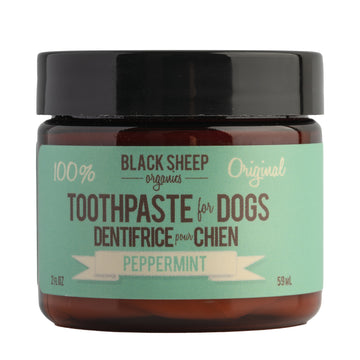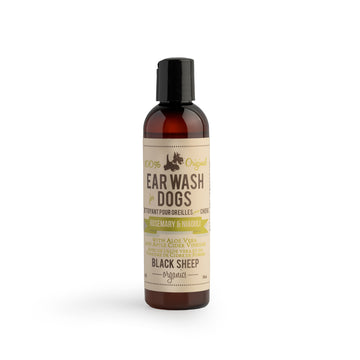Pet Care 101: How to Get Rid of Bug for Dog?
Jan 04, 2024
As dog owners, one of our biggest concerns is bugs like fleas and ticks. But don't worry, there are solutions to keep them at bay. In this blog post, we'll share some easy and effective methods to get rid of fleas and ticks, quickly and safely. Your furry friend deserves bug-free days with you!
Can I Put Bug Spray on My Dog?
The answer isn't quite as simple as a yes or no. It primarily depends on the type of bug spray, its ingredients, and how it's used.
Safety Concerns and Precautions
Before reaching for that bug spray, it's crucial to understand the potential safety concerns. Many commercially available bug sprays intended for human use contain DEET, a highly effective insect repellant. However, DEET can be toxic for dogs, causing symptoms ranging from skin irritation to nervous system problems.
When using any kind of bug spray, avoid the eyes, mouth, and nose where the spray could be easily ingested or cause irritation. Always keep the spray out of reach when not in use.
The Importance of Pet-Friendly Bug Sprays
Given the potential risks, it's a good idea to opt for pet-friendly bug sprays. These are specially formulated to be safe for dogs while still being effective at keeping bugs at bay. Look for products that are DEET-free and vet-approved. Natural options or plant-based ingredients can also be a safer choice.
Moreover, it's essential to follow the manufacturer's instructions regarding application and dosage to ensure your furry friend's safety and comfort.
How to Get Rid of Bug for Dog?
As a pet owner, ensuring they are free from pesky bugs is a crucial part of their overall health and comfort. Here's a step-by-step guide on how to get rid of bugs for your dog:
Step-by-Step Guide to Eradicating Bugs
- Identify the Bug: It's important to know what type of bug has infested your dog. Whether it's fleas, ticks, or mites, each requires a slightly different approach
- Consult a Vet: If you're unsure about the type of bug or the severity of the infestation, it's always a good idea to consult with a professional. They can provide tailored advice and treatment options.
- Use an Appropriate Treatment: Depending on the bug type and your dog's specific needs, choose a suitable treatment. This could be a topical solution, oral medication, or even a specially formulated shampoo.
- Regularly Check for Bugs: Regular inspections of your dog's coat can help spot any potential infestations early. A flea comb can be a useful tool for this.
- Maintain a Clean Environment: Keeping your home clean can prevent bugs from nesting and breeding. Regular vacuuming and washing of your dog's bedding can be particularly effective
Pest Control Products Safe for Dogs
When it comes to pest control, it's crucial to choose products that are safe for your dog. Look for those labeled as pet-friendly, and always follow the manufacturer's instructions. Natural alternatives, such as those containing plant-based ingredients, can also be a safe choice.
Fighting Bugs Inside Your Home
Bugs can easily make their way into your home, especially if your dog spends a lot of time outdoors. Regular cleaning, along with the use of pet-safe home pest control products, can help keep your home bug-free. Remember, prevention is always better than cure.
Fighting Bugs in Out-door Activities
Always be mindful when enjoying the outdoors with your dog. Aware that fleas and bugs may be hiding in the grass at the park or on your neighbor’s dog. Always clean your dog after getting back home.
Some natural essential oil gives off smell that bugs hate. Applying those essential oil-based spray can also help with flea and bugs.
Good for Your Dog: Non-Toxic Ways to Repel Bugs
Keeping your dog safe from bugs doesn't have to involve harsh chemicals. There are plenty of non-toxic, eco-friendly methods that can effectively repel bugs while ensuring your furry friend's well-being. Let's explore some DIY natural bug repellents, beneficial predatory insects, and the use of water blasts.
DIY Natural Bug Repellents
Natural bug repellents can be an effective and safe way to keep pests away from your dog:
- Citronella: Known for its strong scent, citronella can deter a wide range of bugs. Consider using a pet-safe citronella spray or even planting citronella around your yard.
- Bug-Repelling Plants: Certain plants, like lavender, lemongrass, and rosemary, are known to naturally repel bugs. Planting these in your garden can create a bug-free haven for your dog.
Water Blasts: A Safe and Effective Method
A strong blast of water can dislodge many types of bugs from your dog's coat. Regularly grooming your dog with a high-pressure water sprayer can help physically remove bugs and deter them from returning.
FAQ
1. What are the signs of a bug infestation on my dog?
Signs of a bug infestation can vary depending on the type of bug. However, common signs include excessive scratching or biting, redness or inflammation of the skin, hair loss, and the presence of bugs or their droppings on your dog's coat.
2. How often should I apply bug spray to my dog?
This can depend on the specific product and the severity of the bug problem. However, most products recommend reapplication every few days or weeks. Always follow the manufacturer's instructions.
3. What should I do if my dog has an adverse reaction to a bug spray?
If your dog shows signs of an adverse reaction, such as skin irritation, vomiting, or lethargy, stop using the product immediately and consult your vet.
Keeping your dog bug-free requires a thoughtful approach, incorporating natural repellents, regular grooming, and vigilance for signs of infestation. Always prioritize your pet's comfort and safety, and consult with your vet for personalized advice. Remember, a bug-free dog is a happier, healthier companion.











